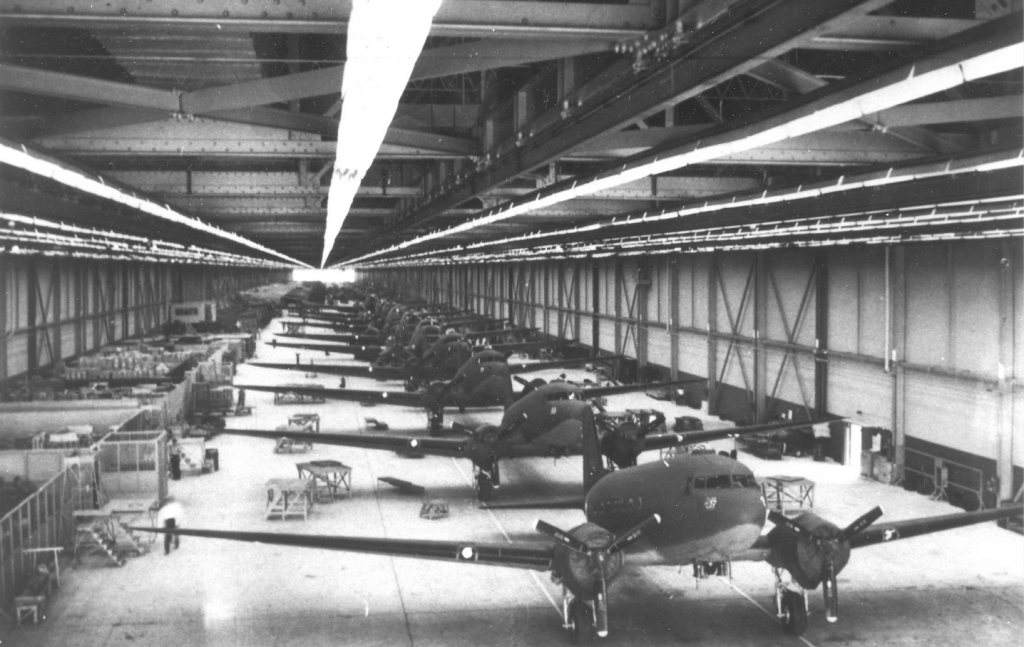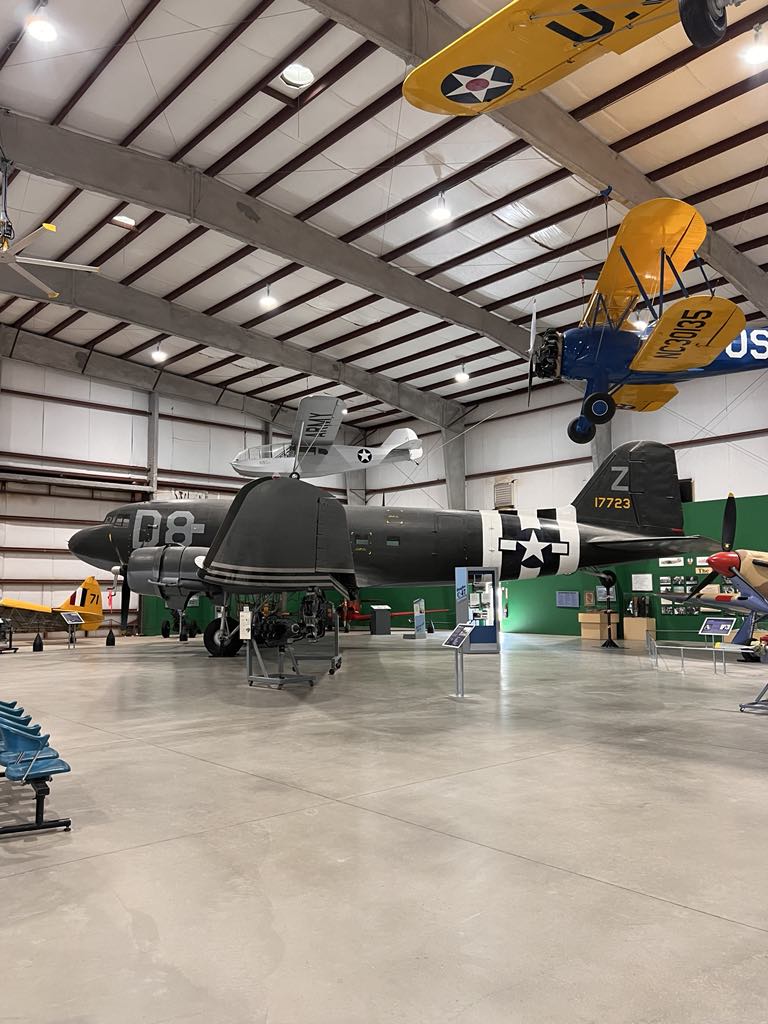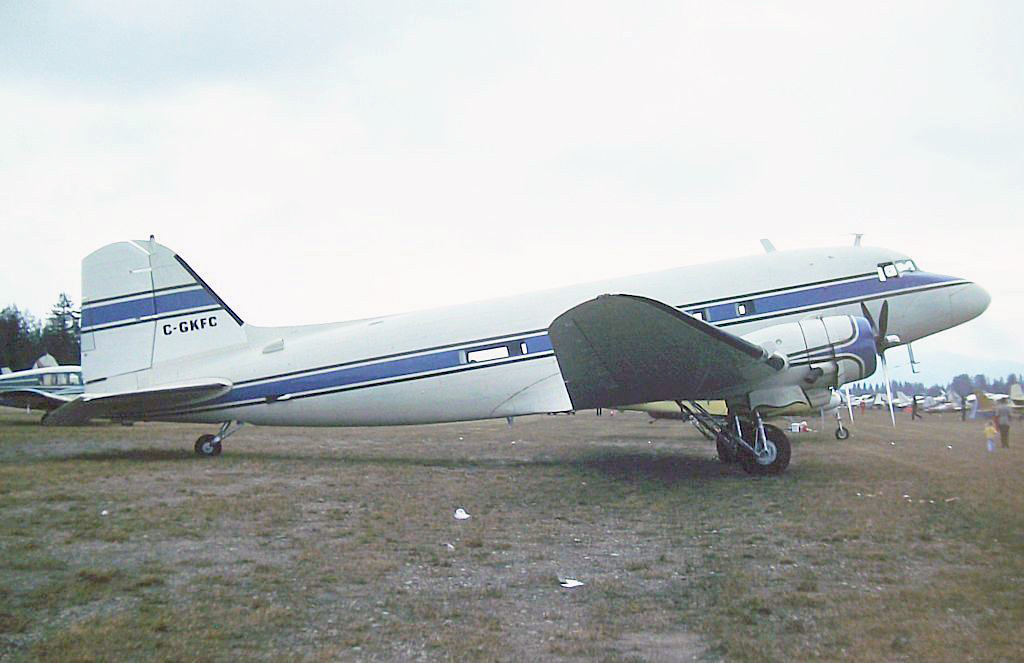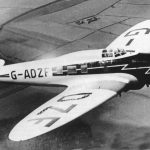

As the US found the prospect of war to be inevitable, the United States Army Air Force and the United States Navy began impressing civilian DC-3s for the purpose of becoming military transports. Some of these were taken from the nation’s airline fleet, while others still in the Douglas Aircraft Company plants were selected for military procurement before they were delivered to their civilian purchasers and were typically used to transport staff officers as C-41s, C-48s, C-49s and C-52s. However, the Army Air Force foresaw the need for a combat transport based off the DC-3 and sent an order for Douglas Aircraft to build such an aircraft. The result was the C-47, which was to be named the Skytrain.
The C-47 differed from the DC-3 through numerous modifications, such as being fitted with a cargo door, a hoist attachment and a strengthened floor. These allowed ground handlers to load and offload not only cargo pallets, but field artillery and even light vehicles such as a Willys Jeep. The C-47 was also fitted with a shortened tail cone where glider-towing shackles could be attached. The C-47 often flew with a crew of four (a pilot, copilot, radio operator, and a navigator). Another distinguishing trait of the C-47 from the DC-3 was the addition of a plexiglass astrodome for celestial navigation.

The C-47 was also introduced around the same time the Douglas Aircraft Company established an aircraft production facility at Long Beach Airport, California, expanding from its original plant in Santa Monica. During WWII, 10,174 C-47s were built in Santa Monica, Long Beach, and at the Midwest City Douglas Aircraft Plant in Oklahoma City, Oklahoma. In time, Long Beach would supplant Santa Monica as the headquarters of Douglas Aircraft until the company’s merger with McDonnell Aircraft in 1967, then with McDonnell Douglas’ ultimate merger with Boeing. The Long Beach facility was also where the first C-47 Skytrain, 41-7722 was built and later flown on its first flight on December 23, 1941. After its acceptance into the USAAF, 41-7722 was flown by the North Africa Division of the Army Air Force’s Air Transport Command (ATC).
Thousands of other C-47s would serve all over the world, from the jungles of New Guinea to the sands of Egypt, Normandy’s fields, and Alaska’s tundra. They were critical to the Allies’ airborne operations for paratroopers and glider forces on D-Day, Operation Market Garden, and the crossing of the Rhine in 1945. They served in the British Commonwealth as the Douglas Dakota, and with the US Navy and Marines as the R4D. For many civilians in the occupied countries of Europe, the C-47’s presence brought up hopes of liberation, and for wounded Allied soldiers, the C-47s and Dakotas often flew them to military hospitals far behind the front lines, where these soldiers could receive proper medical treatment. C-47s also flew vital supplies from India through the Himalayas into China to fight the Japanese there.
After the war, many C-47s were declared surplus and sold to civilian airlines and cargo-carrying firms, but others continued to serve long after WWII in the air forces of dozens of countries around the world. One of the greatest postwar military feats of the C-47 Skytrain was the Berlin Airlift. While it was not the only type of plane to fly supplies into the war-torn capital city in the midst of the Berlin Blockade imposed by the Soviets, it flew the majority of the early missions into Berlin’s Tempelhof Airport, with dozens of them landing into Berlin every day of the airlift.

Even today, a handful of countries around the world still fly the C-47 in military service, with most of them now having their avionics upgraded to modern standards and their Pratt & Whitney R-1830 radials being replaced by modern turboprop designs, which have also been applied to numerous civilian DC-3s that started life in WWII as C-47s. Several other C-47s have been preserved in aviation museums, with others still being restored to airworthiness.
As for the very first C-47, 41-7722, it survived the war to be stricken from service through the War Assets Administration on February 10, 1946. From there, 41-7722 would go through a number of private owners under different registrations, mostly as a corporate transport for groups such as the National Cash Register Co., Industrial Nucleonics Corp., and South Texas Transports Inc. Later, the aircraft was exported to Canada, where it was registered as C-GKFC and operated by Kelowna Flightcraft Ltd, in Kelowna, British Columbia and flown in the colors of Bayview Air as a charter plane. On September 7, 1976, C-GKFC took off from Lethbridge, Alberta, bound for Vernon, British Columbia. At 12,000, a fire broke out in the rear of the passenger cabin near the washroom. The pilot declared an emergency to air traffic control. They dropped altitude and intended to divert to nearby Pincher Creek Airport, Alberta, but with the fire still raging onboard and smoke filling the cabin, the crew chose to land in an open field ahead of them, 5 miles (8 kilometers) east of Brocket, some 11 miles (18 kilometers) east of Pincher Creek Airport. The plane landed in the field, and although all 28 occupants were able to evacuate the plane, the first C-47 ever built was destroyed. Interestingly, though, the second C-47 ever built, 41-7723, has been preserved and is currently on display at the Pima Air and Space Museum in Tucson, Arizona.

The Douglas C-47 Skytrain, born for war but descended from a nearly 90-year-old airliner, remains an icon of aviation history to this day. It may not have always gotten the press or the glory of the fighters or the bombers, but it was an indispensable tool in the Allied war effort, with future President of the United States Dwight Eisenhower singling it out as one of the weapons that helped the Allies win World War II. Even today, there are still some C-47s flying with metal patches over the bullet and shrapnel damage they received in combat. So long as the C-47 continues to inspire interest in people to maintain and fly them, it is very likely that the Douglas C-47 Skytrain/Dakota will still be flying for its 100th anniversary.
Today in Aviation History is a series highlighting the achievements, innovations, and milestones that have shaped the skies. All the previous anniversaries are available HERE
































